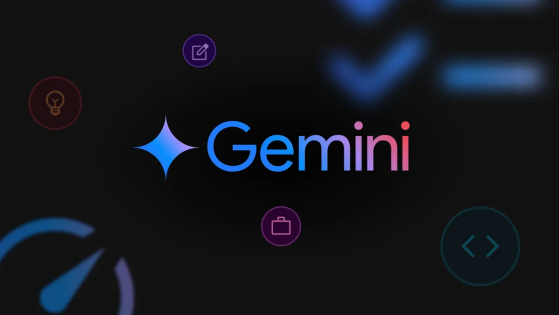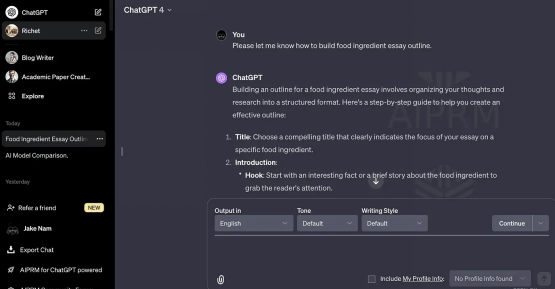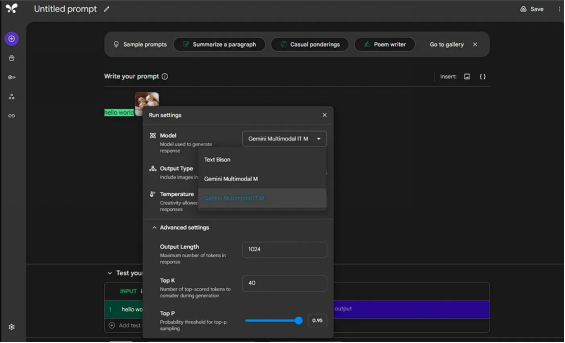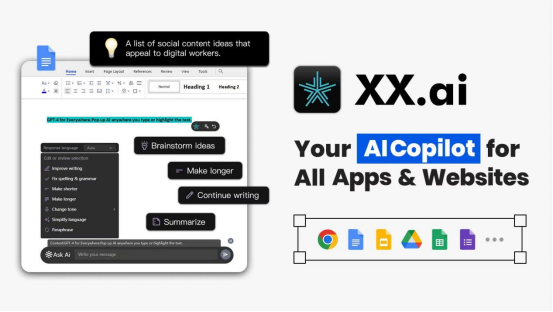Chatbot de IA Conversacional Google Gemini (anteriormente conhecido como Bard)

O que é o Google Gemini (anteriormente conhecido como Bard)?
Google Gemini, anteriormente conhecido como Bard, é uma ferramenta de chat de IA desenvolvida pelo Google. Ela usa processamento de linguagem natural (NLP) e tecnologias de aprendizado de máquina para simular conversas humanas. Além de aprimorar a funcionalidade de pesquisa do Google, o Gemini também pode ser integrado a sites, plataformas de mensagens ou aplicativos para fornecer respostas textuais naturais. Gemini é um conjunto de grandes modelos de linguagem multimodais (LLMs) capazes de entender linguagem, áudio, código e conteúdo de vídeo.

Desenvolvido pela divisão DeepMind do Google sob o Alphabet, o Gemini foi lançado pela primeira vez em 6 de dezembro de 2023, com a participação do cofundador do Google, Sergey Brin, e outros funcionários em seu desenvolvimento. No lançamento, o Gemini era o LLM mais avançado do Google, apoiando o Bard antes de ser renomeado e substituindo o Pathways Language Model (Palm 2) da empresa. Assim como o Palm 2, o Gemini está integrado em várias tecnologias do Google para fornecer funcionalidades de IA generativa.
O Gemini incorpora capacidades de NLP, oferecendo a habilidade de entender e processar a linguagem. Ele também é usado para compreender consultas de entrada e dados. Ele pode reconhecer imagens, permitindo que interprete efeitos visuais complexos, como gráficos e números, sem a necessidade de reconhecimento óptico de caracteres (OCR) externo. Além disso, ele suporta extensas funcionalidades multilíngues para tarefas de tradução e operações em diferentes idiomas. Ao contrário dos modelos de IA anteriores do Google, o próprio Gemini é multimodal, treinado em conjuntos de dados que abrangem vários tipos de dados de ponta a ponta. Como modelo multimodal, o Gemini permite o raciocínio entre diferentes tipos de dados de entrada, incluindo áudio, imagens e texto. Por exemplo, o Gemini pode entender anotações manuscritas, diagramas e gráficos para resolver problemas complexos. A arquitetura do Gemini suporta a extração de sequências intercaladas de texto, imagens, formas de onda de áudio e quadros de vídeo.
Por que o Bard foi renomeado para Gemini?
Em 8 de fevereiro de 2024, o Bard foi renomeado para Gemini. O Gemini já era o curso de LLM para o Bard. Alguns acreditam que renomear a plataforma para Gemini pode desviar a atenção do nome Bard e das críticas que enfrentou em seu lançamento inicial. Além disso, a renomeação ajuda a simplificar a estratégia de IA do Google, destacando o sucesso do LLM Gemini. Do ponto de vista de marketing, a renomeação também ajuda a melhorar a imagem da marca do Google no campo da IA.
Como o Google Gemini funciona?
O Google Gemini funciona sendo treinado em vastas quantidades de dados. Após o treinamento, o modelo utiliza várias tecnologias de redes neurais para entender o conteúdo, responder a perguntas, gerar texto e produzir saídas. Especificamente, o LLM Gemini usa uma arquitetura de rede neural baseada no modelo Transformer. A arquitetura do Gemini foi aprimorada para lidar com longas sequências contextuais de diferentes tipos de dados, incluindo texto, áudio e vídeo. O Google DeepMind emprega mecanismos de atenção eficientes no decodificador Transformer para ajudar o modelo a processar longos contextos em diferentes modalidades.
O modelo Gemini foi treinado em vários conjuntos de dados multimodais e multilíngues de texto, imagens, áudio e vídeo do Google DeepMind e usa filtragem de dados avançada para otimizar o treinamento. À medida que diferentes modelos Gemini são implantados para suportar serviços específicos do Google, há um processo de ajuste fino direcionado para otimizar ainda mais o modelo para casos de uso específicos. O Gemini se beneficia do uso dos mais recentes chips de Unidade de Processamento Tensorial (TPU) v5 do Google durante as fases de treinamento e inferência, aceleradores de IA personalizados projetados para treinamento eficiente e implantação de grandes modelos.
Um dos principais desafios enfrentados pelos LLMs é o risco de vieses e conteúdo potencialmente prejudicial. De acordo com o Google, o Gemini passou por extensos testes de segurança e mitigações para riscos como vieses e toxicidade, para ajudar a fornecer um certo nível de segurança no LLM. Para garantir ainda mais que o Gemini funcione corretamente, esses modelos são testados em benchmarks acadêmicos nos domínios de linguagem, imagens, áudio, vídeo e código. O Google assegura ao público que adere a um conjunto de princípios de IA.
Aplicações do Gemini
As características multimodais do Gemini permitem que esses diferentes tipos de entrada sejam combinados para gerar saídas. O Gemini pode ser usado para processamento de texto, reconhecimento de imagens, processamento de áudio e compreensão de vídeo. Por exemplo, as empresas podem usá-lo para tarefas como:
- Resumo de Texto: Resumir conteúdo de vários tipos de dados.
- Geração de Texto: Gerar texto com base em prompts do usuário, que também pode impulsionar interfaces de chatbot do tipo Q&A.
- Tradução de Texto: Com capacidades multilíngues extensas, traduzindo e entendendo mais de 100 idiomas.
- Compreensão de Imagem: Interpretando efeitos visuais complexos sem a necessidade de ferramentas OCR externas.
- Processamento de Áudio: Suporte ao reconhecimento de fala multilíngue e tradução de áudio.
- Compreensão de Vídeo: Processar e entender clipes de vídeo quadro a quadro para responder perguntas e gerar descrições.
- Raciocínio Multimodal: Usando raciocínio de IA multimodal para misturar diferentes tipos de dados para a geração de prompts.
- Análise e Geração de Código: Entender, interpretar e gerar código em linguagens de programação populares, como Python, Java, C++ e Go.
Áreas de Aplicação
O Google desenvolveu o Gemini como um modelo fundamental para ser amplamente integrado a vários serviços do Google. Os desenvolvedores podem aproveitar o Gemini para criar várias aplicações. Abaixo estão alguns exemplos:
- AlphaCode 2: Uma ferramenta de geração de código do Google DeepMind que utiliza uma versão personalizada do Gemini Pro.
- Pixel 8 Pro: O primeiro smartphone a rodar o Gemini Nano, fornecendo recursos de resumo e resposta inteligente.
- Vertex AI: Um serviço da Google Cloud que oferece aos desenvolvedores acesso a modelos fundamentais e ao Gemini Pro.
- Google AI Studio: Uma ferramenta baseada na web para criar protótipos e aplicativos. Todas essas ferramentas se beneficiam dos recursos versáteis do Gemini, desde o processamento de texto até a geração de código.
Comparação entre o Google Gemini e ChatGPT
Tanto o Gemini quanto o ChatGPT são chatbots de IA projetados para interagir com humanos por meio de NLP e aprendizado de máquina. Ambos usam LLMs subjacentes para gerar e criar texto conversacional, mas têm algumas diferenças:
- Compreensão da Linguagem: O ChatGPT se destaca na compreensão e geração de texto semelhante ao humano, tornando-o ideal para escrita criativa e IA conversacional. Por outro lado, apoiado pelos poderosos algoritmos de pesquisa do Google, o Google Gemini mostra um desempenho excepcional na compreensão de consultas complexas e na oferta de respostas precisas e informativas.
- Geração de Respostas: O ChatGPT se destaca por sua capacidade de gerar conteúdo longo, coerente e relevante ao contexto. O Google Gemini, por sua vez, se destaca em gerar respostas concisas e precisas, aproveitando a extensa base de informações do Google.
- Aprendizado e Adaptabilidade: Os algoritmos de aprendizado do ChatGPT permitem que ele melhore continuamente com base nas interações dos usuários, tornando-se mais eficiente em conversas personalizadas. O Google Gemini se integra ao ecossistema do Google, atualizando consistentemente sua base de conhecimento para manter as informações atualizadas e precisas.

Interface e Experiência do Usuário
O ChatGPT oferece uma interface amigável e intuitiva, especialmente benéfica para usuários novos em modelos de linguagem de IA. Seu estilo de conversação o torna mais fácil de entender e envolvente.

O Google Gemini, integrado a vários produtos do Google, proporciona uma experiência de usuário contínua, especialmente para aqueles que já estão familiarizados com o ecossistema do Google. Sua interface é projetada para eficiência e precisão, atendendo usuários que buscam informações rápidas e precisas.

Alternativas ao Google Gemini
Chatbots de IA já existem há algum tempo, mas em várias formas. Muitas startups possuem tecnologia de chatbot semelhante, e exemplos de concorrentes do Gemini incluem:
ChatSonic
Anunciado como uma "alternativa superpotente ao ChatGPT", é um chatbot de IA alimentado pela pesquisa do Google e equipado com o gerador de texto baseado em IA Writesonic, permitindo que os usuários discutam tópicos em tempo real para criar texto ou imagens.
Claude
Um chatbot de IA da Anthropic, nomeado em homenagem ao seu LLM subjacente. Ele passou por testes rigorosos para garantir que atenda aos padrões éticos de IA, evitando saídas ofensivas ou imprecisas.
XXAI
Copiloto de IA Premier para GPT-4o & Claude 3.5. Obtenha resumos, respostas, textos aprimorados, traduções, rascunhos e pesquisa de IA onde quer que você trabalhe. Alterne facilmente entre GPT-4o e Claude 3.5 para conteúdos profissionais e economize horas diariamente.

GitHub Copilot
Especificamente para desenvolvedores, fornecendo serviços de geração de código. Ele visa simplificar tarefas de desenvolvimento demoradas no desenvolvimento de software moderno. Embora não seja para geração de texto, é uma alternativa ao ChatGPT ou Gemini para geração de código.
Jasper Chat
O Jasper Chat, da Jasper.ai, é uma ferramenta de IA conversacional focada na geração de texto. Ele é voltado para empresas que desejam criar conteúdo relacionado à marca e conversas com clientes. Ele permite que os criadores de conteúdo especifiquem palavras-chave de SEO e tom dentro dos prompts.
YouChat
Um chatbot de IA do mecanismo de busca alemão You.com. O YouChat responde a perguntas e fornece respostas citadas para que os usuários possam verificar as fontes e verificar os fatos.
Com o avanço contínuo da tecnologia de IA, a prevalência de chatbots de IA na vida cotidiana e nos negócios aumentou significativamente. Capacidades multimodais e multilíngues são direções cruciais para o desenvolvimento futuro.
Vantagens e Limitações do Google Gemini
Vantagens do Google Gemini:
- Precisão: Graças ao extenso índice de dados do Google, o Google Gemini se destaca na recuperação precisa de informações.
- Integrado ao Banco de Dados do Google: Ele pode acessar perfeitamente a vasta base de conhecimento do Google, fornecendo aos usuários uma abundância de informações prontamente disponíveis.
- Percepções Baseadas em Dados: Ideal para pesquisa e análise, ele pode processar grandes quantidades de dados para extrair percepções significativas, úteis para pesquisa acadêmica e de negócios.
- Eficiência: O Gemini se concentra em fornecer informações concisas e relevantes rapidamente, o que é altamente eficiente para usuários que precisam de respostas rápidas.
Limitações do Google Gemini:
- Interação Menos Humanizada: Ao contrário do ChatGPT, as respostas do Gemini podem se concentrar mais em dados do que em conversas, o que pode ser menos envolvente para aplicativos de atendimento ao cliente ou bate-papo casual.
- Complexidade de Integração: Para usuários que não estão familiarizados com o ecossistema do Google, integrar e utilizar todas as funcionalidades do Gemini pode ser complexo e intimidador.
- Saída Criativa Limitada: O Gemini é menos adequado para tarefas que exigem geração criativa de linguagem, como redação de romances ou desenvolvimento de conteúdo criativo.
Desenvolvimento Futuro do Google Gemini
O futuro do Gemini é cheio de potencial, com o Google planejando otimizar ainda mais suas capacidades de processamento multimodal e ampliar sua aplicação em mais campos. Os avanços esperados incluem a integração de recursos mais avançados, como o reconhecimento de mais idiomas, processamento de dados mais eficiente e aplicações em mais dispositivos.
- Análise de Dados Abrangente: O Google Gemini está definido para integrar ferramentas de análise de dados mais avançadas, aprimorando sua capacidade de processar e interpretar grandes quantidades de dados rapidamente e com precisão. Isso é particularmente benéfico para tarefas de pesquisa e análise complexas.
- Integração Contínua com o Ecossistema do Google: As futuras iterações do Gemini provavelmente se integrarão mais estreitamente com a ampla gama de serviços e plataformas do Google, tornando-o uma ferramenta mais unificada e poderosa para recuperação e análise de informações.
- Processamento de Informações em Tempo Real: Um foco para o Gemini é aprimorar sua capacidade de processar dados e percepções em tempo real, crucial em cenários que mudam rapidamente, como tendências de mercado ou dinâmica de notícias.
Conclusão
O Google Gemini é uma poderosa ferramenta de IA que não apenas representa uma atualização para o Bard, mas também significa um passo importante para o Google no domínio da IA. Apesar de algumas limitações, com otimizações e melhorias contínuas, o Gemini está prestes a se tornar um jogador significativo no campo da IA, impulsionando ainda mais a adoção e aplicação da inteligência artificial.